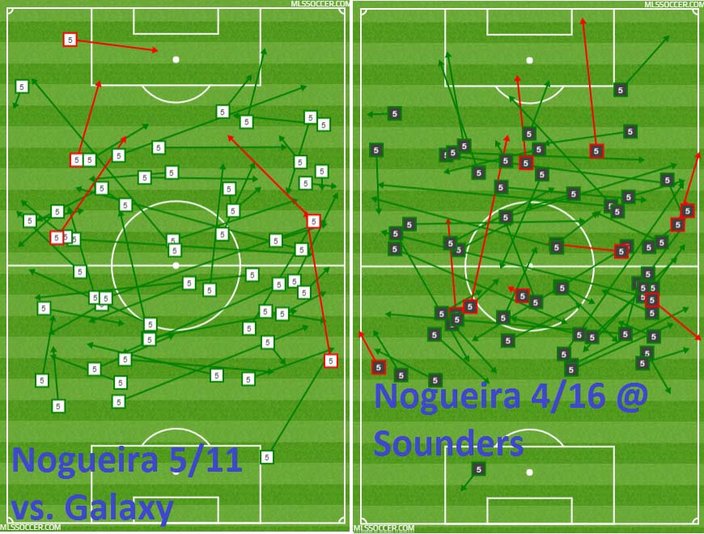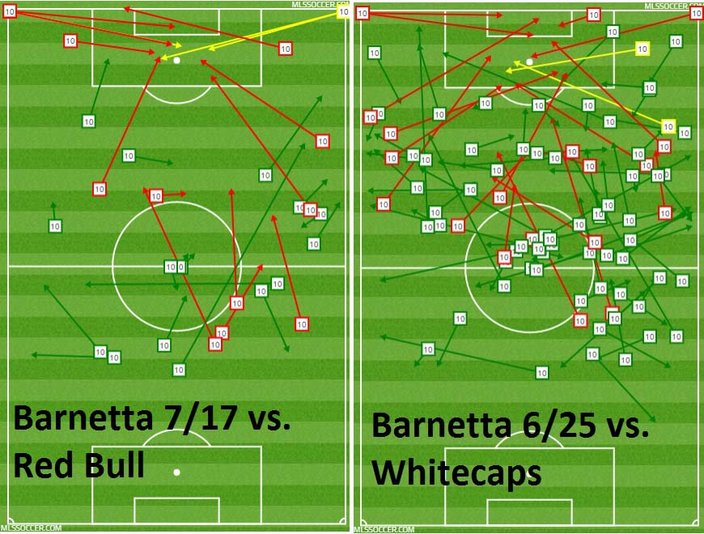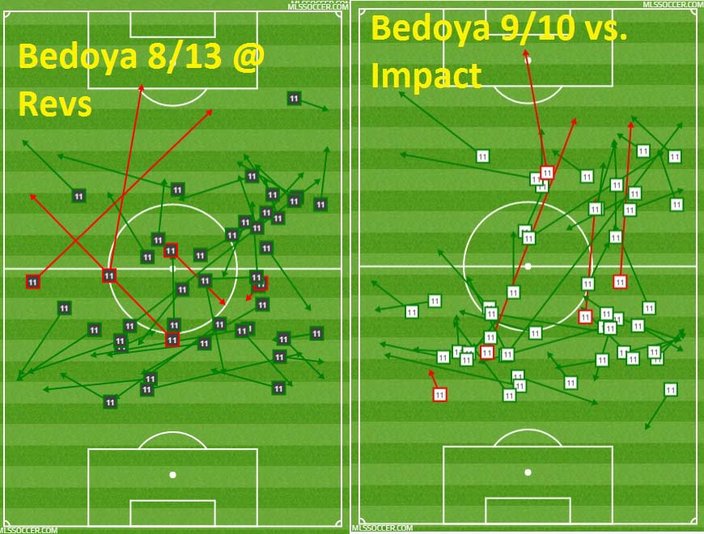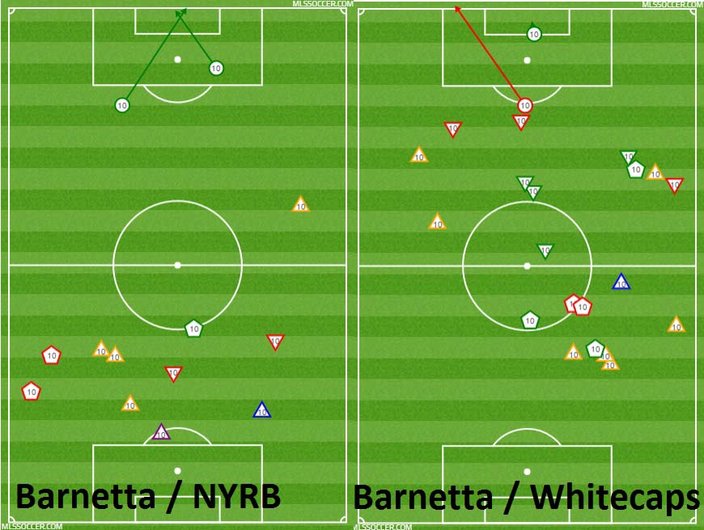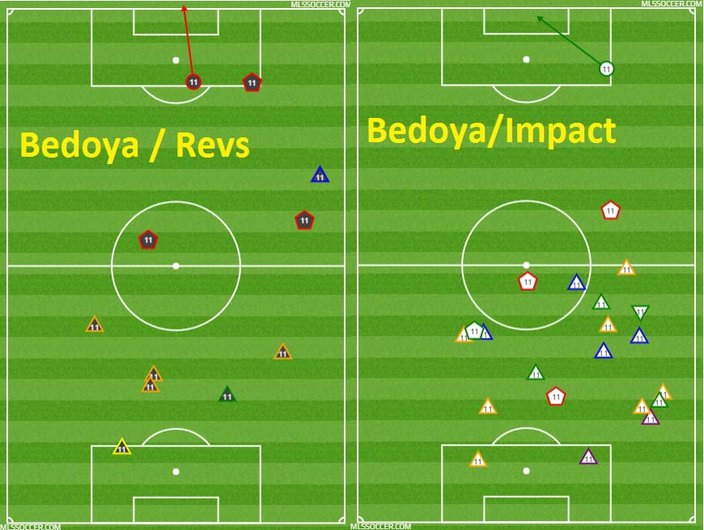
October 31, 2016
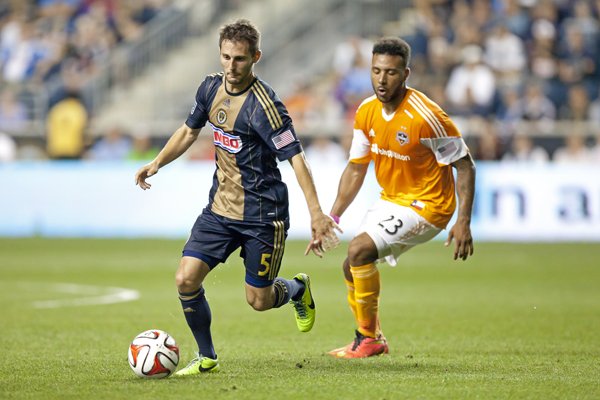 Daniel Gajdamowicz/Philly Soccer Page
Daniel Gajdamowicz/Philly Soccer Page
Did Vincent Nogueira's sudden departure cause the Philadelphia Union's mid-season dip in form?
There are running theories as to why the Philadelphia Union fell apart in 2016.
The defense couldn't stop conceding goals. The offense dried up. The players were tired. Maybe this team was punching above its weight the entire season.
Was the autumn slide simply a regression to the norm?
One of the contributing factors to the implosion was the shock departure of Vincent Nogueira in June. The French midfielder signed for RC Strasbourg one week after leaving Philadelphia for "personal health reasons" as we were told by the Union technical staff.
A shoo-in for a starting spot every single week, Nogueira's departure suddenly left the first-place Union with a gaping hole to fill.
For starters, here's Nogueira's final line from 2016:
Eight games played (eight starts), 684 minutes, two goals, zero assists, 14 shots, three shots on goal.
Not much to look at, right? Nogueira is not a statistical machine, and much of his production is determined by actually watching the games and seeing how he moves the ball. That's one of the reasons why he was underrated and undervalued in MLS. You just can't describe a solid number eight with statistics alone.
For what it's worth, Nogueira finished the 2015 season with this line:
27 games played (22 starts), 1,993 minutes, five goals, zero assists, 25 shots, 10 shots on goal
If you extrapolate the numbers, Nogueira likely would have finished 2016 with a very similar line to what you see above.
Vince should have played 14 games this year, but he missed six via two separate injuries. He started in the season opener against Dallas, which was the 2-0 loss, then missed the next three games against Columbus, New England, and Chicago with an ankle problem.
He came back to make six straight starts in April and May, then missed three more games with an oblique strain before making his final Union appearance in the 3-2 home win against Columbus. The Union entered the Copa America break atop the Eastern Conference.
In the eight games Nogueira played, the Union had three wins, two losses, and three draws.
In the six games that Nogueira did not play, the Union had three wins, one loss, and two draws.
Then, in the final 20 games after Nogueira's departure, the Union finished with five wins, 11 losses, and four draws.
Just by looking at those numbers alone, it's hard to make any real judgment on the early part of the season. Tranquillo Barnetta also missed the start of the year with a knee problem, and the Union rolled out some ultra-defensive formations in the wins against Columbus and New England. The pairing of Warren Creavalle and Brian Carroll in the midfield was particularly effective in those games.
The club also got stoppage-time winners against Orlando and D.C., one from a Barnetta free kick and one from Richie Marquez on a back-post cross. Philly put together an eight-game unbeaten streak in which Nogueira played five games. In the games that he was not on the field, Curtin used the Carroll and Creavalle combination three times in eight days, which resulted in a pair of short-rest road draws at Orlando and Colorado.
It's hard to draw conclusions from that first chunk of the season. Philly's defense was certainly better back then. Other teams, like New York City and D.C., had not yet hit their stride. Four of six wins came against clubs that did not make the playoffs. The Union were having success packing it in and becoming a difficult team to break down.
One of the things that changed when Nogueira left was that other players were moved around the formation. Jim Curtin stuck with the Carroll/Creavalle combo for the June 18th loss in New York City, a game where the Union inexplicably shipped three goals on the road. At the time, it was the worst defensive performance of 2016.
In the next game, a home match against Chicago, Curtin moved Tranquillo Barnetta into the number eight spot and used Roland Alberg as a number ten. The Union defense again struggled, giving up three goals at home. The offensive switch made the difference, though, and Alberg bagged the first hat trick at Talen Energy Stadium in a 4-3 home win.
Alberg made six straight starts after that game, spanning June 25th to July 31st. He scored three more goals in that stretch, but the Union finished that month with one win, four losses, and a draw. The defense gave up 13 goals, a number bloated by the 5-1 loss suffered in Montreal after an exhausting midweek U.S. Open Cup game at New England.
It didn't seem to matter who was in the number eight spot. Barnetta played Nogueira's role in the 3-2 home loss against Vancouver. Creavalle played there in the 2-1 home loss to Real Salt Lake.
For whatever reason, the Union defense was struggling. Josh Yaro and Ken Tribbett split time at center back and individual errors started to pop up along the backline.
Again, it's hard to make a defined judgment based on the mid-season results. Nogueira's departure pulled Barnetta out of his best position, but it also opened up a spot on the field for Alberg.
Barnetta did not have the defensive discipline and ball moving ability of Nogueira in a deeper-lying role, but, even then, the Union backline was starting to make mistakes that we did not see in the first part of the season.
The shuffled continued with the addition of Alejandro Bedoya, who played his first Union game on August 6th, bumping Alberg to the bench and allowing Barnetta to get back to the number ten spot.
Philly saw an immediate uptick in form, with three wins in five games and more mettle in the defensive midfield. Bedoya looked rusty in his distribution, but he added hardness at the number eight that Barnetta simply did not bring. Likewise, Barnetta added bite further up the field, which Alberg, despite his goal-scoring prowess, simply did not provide. Barnetta was able to press, run at defenders, draw fouls, and earn restart situations for his team. You just can't do that kind of stuff effectively when you play as an eight.
It looked like the Union had figured it out, then the form dipped again, and Bedoya started to become less influential. Sapong couldn't score, Alberg couldn't get off the bench, and Barnetta began to run out of steam.
Ball movement was also stale, and for all of the defensive reinforcement that Bedoya added, he just couldn't move the ball the same way Nogueira did.
As I said earlier, it's really hard to illustrate the number eight position with statistics. You really have to pay attention to starting points, positioning, total touches on the ball, and heat maps.
In the 4-2-3-1, the number eight is really supposed to facilitate ball movement from back to front. Nogueira was masterful on that front, always dropping deep, demanding the ball, and moving it forward with a variety of short passes, medium line-splitters, and longer diagonals to fullbacks and wingers.
Here are a couple passing charts for each player:
It's easy to cherry pick games, and obviously, there are going to be specific situations that influence particular outings. I tried to be fair with the selections and choose games that illustrate each player's patterns of play and tendencies. For Nogueira, I used the 2-2 home draw against the Galaxy and the 2-1 road loss in Seattle, where the Union played down a man for part of the second half.
You see that he plays a very balanced game, covering a lot of space and distributing with high percentage passes. Even in the Seattle game, he was very sharp in a tough road environment, on a difficult surface, while only playing full strength for the first two-thirds of the game.
Barnetta was not as positionally disciplined as Nogueira was, but he was much better going forward, as you can see below. In the 3-2 Whitecaps loss, he actually plays more passes in Vancouver's half of the field. Maybe his penchant for going forward left Brian Carroll in difficult defensive positions, and maybe that added to the defensive struggles, but Barnetta definitely provided attacking power from the eight spot at the expense of defensive shape and balance.
The chart on the left is particularly alarming, with so few touches at home against a good New York side. He finished the game with eight successful passes in his own half of the field, which is a bizarre chart for a number eight.
Bedoya, then, is somewhere in between. He tended to play a much more structured game than Barnetta did, but really didn't venture too far forward.
His tendency to hold and protect the backline was a welcome change from Barnetta's wanderlust, though you see that Bedoya didn't seem to blanket the field the same way Nogueira did. When Bedoya did move up the field, he trended to the right for some reason, which may have been the product of getting the ball on his stronger foot and/or moving into space vacated by Fabian Herbers, who played the right wing differently than Sebastien Le Toux and Ilsinho.
Either way, you see that Nogueira was more successful in longer passing situations, whereas Bedoya and Barnetta didn't seem to be able to switch fields or influence possession in the same way.
Nogueira was the best ball mover, Barnetta was the best attacker, and Bedoya was the best defender. Each player brought something different to the number eight spot.
As for Creavalle - who I didn't really mention – he was essentially a number six playing higher up the field. He was, by far, the best tackling and disrupting number eight on the team, but did not have the passing chops of Bedoya, Barnetta, or Nogueira.
For each chart, here are the corresponding maps with defense, discipline, and shooting added to the parameters.
Here's the key :
soccer ball = goal
circle + green = on target shot
circle + red = off target shot
circle + yellow = blocked shot
orange triangle = recovery
purple triangle = clearance
blue triangle = interception
green triangle = tackle won
upside-down green triangle = successful dribble
upside-down red triangle = failed dribble
green pentagon = foul won
red pentagon = foul conceded
For Nogueira, you see a good mix of defensive events and forays forward.
Vince didn't log a ton of interceptions, clearances, or tackles, but he did recover very well to rebuild the Union shape. He wasn't a physical guy who got tangled up, and sometimes he would lose the ball in his half of the field. His game was predicated on passing.
Barnetta tended to drive play forward, and would often log more events in fouls won, fouls conceded, successful dribbles, and failed dribbles.
He did do some defensive work in his own half but didn't recover like a typical number eight. When attacking up the field, his transitional defense was almost nonexistent.
The chart on the left (a 4-0 win) is atypical for Bedoya, while the chart on the right is a better illustration of what he did when he played his first few games for the team.
Bedoya was much more inclined to get "stuck in", throwing out tackles and intercepting passes better than Nogueira and Barnetta. He will likely play as a number ten next season.
It's hard to determine how much of a role Nogueira's departure played in the Union slide.
The shuffle took Barnetta out of his best position, but it allowed Alberg on the field. Bedoya filled the gap, but it probably wasn't his most effective spot. The Union were decent without Nogueira in the spring, but they also were probably punching above their weight at the time.
One of Jim Curtin's failures this season was not experimenting more when Nogueira left. Instead of trying a 4-4-2 or tweaking the shape a bit, he simply kept the 4-2-3-1 and tried different players at the number eight position. We never got to see a Herbers and Sapong combination, or much of Charlie Davies at all. We never got to see Bedoya in a 4-4-2, and Maurice Edu didn't even get on the field in 2016. Obviously, there's nothing Curtin can do about that, but it would have gone a long way towards fixing the midfield problem.
At the end of the day, Vince Nogueira is a guy who passes the eye test. I can't articulate the effectiveness of a ball-moving number eight in a 2,000-word article, but anyone who paid attention this season knows that he would be a starter for most teams in Major League Soccer.
